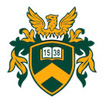Novák Ádám (szerk.): Fontes Memoriae Hungariae III. Varsóban őrzött magyar vonatkozású oklevelek, 1439–1489. Közreadja: Novák Ádám, Tóth Orsolya és Tóth Péter (Debrecen, 2019)
Sobiesław Szybkowski: Polish-Hungarian Relations between 1437 and 1490. A Short Introduction
XXIX which would settle mutual conflicts. He also called for the annulment of the anti-Corvinus alliance between Casimir and Vladislaus. The result of this legation was supposed to be a congress of the three monarchs (Matthias, Casimir and Vladislaus) in Wrocław in November, but eventually it did not take place.95 The relations between Poland and Hungary were surely exacerbated by the claim made by Matthias in September 1489. He wanted to buy back Spiš, which had been pledged in 1412. 96 What put an end to all these complications was the premature death of Matthias Corvinus. He died in Vienna on 6 April 1490.97 This event reshuffled the balance of power in Central Europe. The two dynasties, namely the Jagiellons and the Habsburgs, which had so far cooperated in their fight against King Matthias, now became rivals fighting for his Hungarian legacy. There was even a conflict within the Jagiellonian dynasty itself, since two sons of King Casimir, the Bohemian king Vladislaus II and John Albert, began fighting for the Hungarian throne.98 Eventually, Vladislaus II won the Hungarian crown and the Jagiellons exercised their dynastic rights to Hungary, gained in 1454 when Casimir IV Jagiellon married Elisabeth of Austria. The coronation of Vladislaus II in Buda was a symbolic culmination of the dynastic plans concerning marriages between the Habsburgs and the Jagiellons which had been first presented to Emperor Sigismund of Luxemburg in the years between 1434 and 1437. 95 CEX, Vol. III. Nr. 354.; Papée, 1904. 245–253.; Baczkowski, 1995B. 22–23. 96 Papée, 1904. 248. 97 Kalous, 2009. 331–332. 98 Papée, Fryderyk: Jan Olbracht . Kraków, 1999. 23–25.; Baczkowski, 1995B. 29–152.
